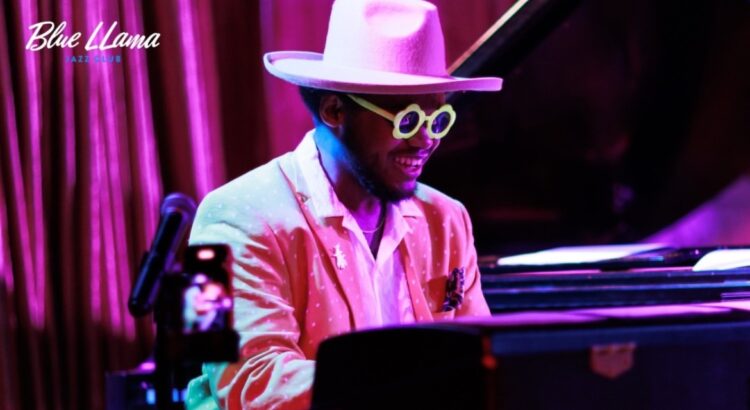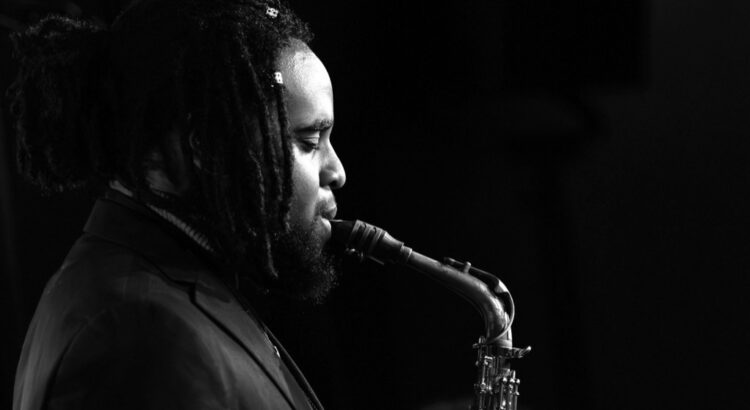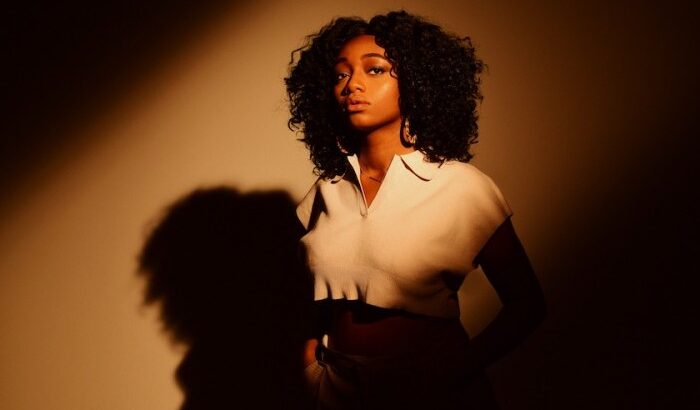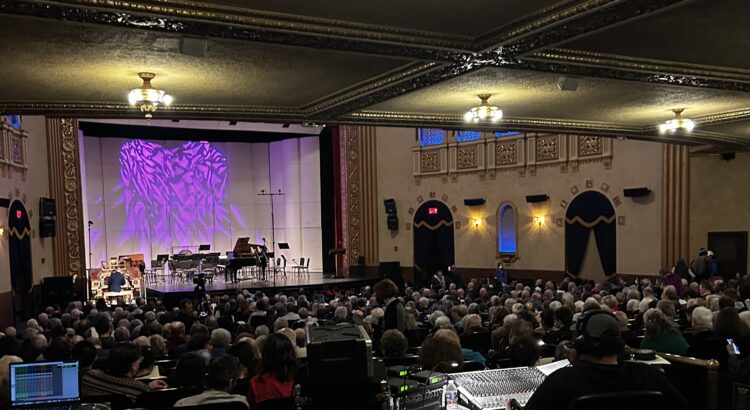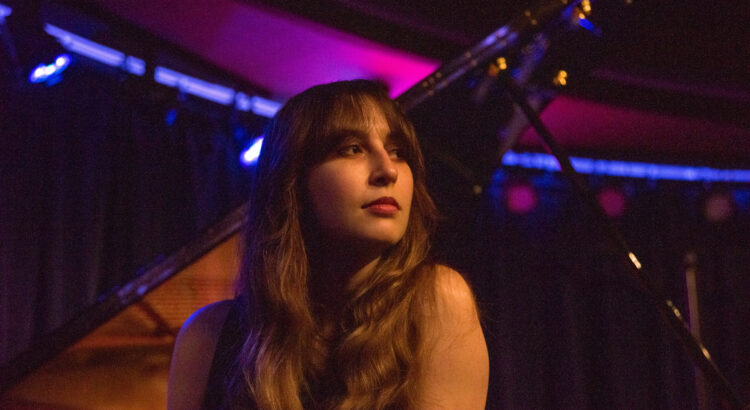November 30 | 10:30pm | Blue Llama Jazz Club
No better place in Ann Arbor to see live jazz than under the magenta-blue lights of the Blue Llama Jazz Club. These dimly lit corners have housed some of today’s most esteemed jazz players since its opening in 2019, featuring all-star players from our own Detroit and beyond.
Tonight’s late-night set featured the spunky William Hill III, a pianist and composer currently based in Manhattan. Hill’s trio included Detroit-based players Dylan Sherman on the bass and drummer Sam Melkonian. I have seen a few of his sets at the Llama now, where he performs standards from the Great American Songbook along with his original tunes. And to celebrate December 1st’s icy debut, he wove in some holiday favorites.
It’s easy to return to Hill’s sets—he is overflowing with creativity and vibrancy in his playing. His improvisational language is deep and complex, with nods to the great Red Garland and Oscar Peterson (favorites of mine). Combined with his technical virtuosity allows for a really interesting exploration of the Songbook tunes we all know and love. He released his debut album “Three’s Company (Live)” this past July, recorded live at Detroit’s historic Cliff Bell’s Jazz Club.
The sound in The Llama is the second best reason to go (the first being the fantastic musicians, obviously), but the space resonates nicely for such an intimate setting and allows for both a beautiful visual and aural experience (at least from the tables along the back wall). A piano trio fills the stage and the sound in the room super nicely.
The very first tune included a tight bass feature from Sherman. He’s got a pliable sound, with light, effervescent improvisational ideas, making his interaction with Hill such fun to encounter. Never underestimate a swingin’ bassist.
I couldn’t catch the name of every tune but a few caught my ear: A striking version of John Coltrane’s “Moments Notice”, the Strayhorn classic “Take the A-Train”, and “Chant” which seems to be an original composition of Mr. Hill’s. He also included a favorite of mine from his record: “Jilly”, a sweet tune, one that captured the audience amidst its meditative waltz-i-ness.
Holiday tunes included: Duke Ellington’s “Sugar Rum Cherry” (a la Tchaicovsky’s Dance of the Sugar Plum Fairy); a jaunty and playful “Winter Wonderland”; and a burning “Sleigh Ride” accompanied by Detroit trumpeter Jauron Perry to complete the set.
I expect Will Hill III does well in Manhattan—he’s breaking out in the industry almost as fast as he can swing.
Images thanks @bluellamajazzclub Instagram.

